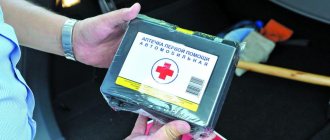What do the traffic rules say?
The direct answer to our main question says absolutely nothing useful. Traffic regulations regulate the condition of tires and wheels, as well as the combination of their use on different axles.
But whether it is possible to drive on winter tires in the summer, as well as the possibility of using summer tires in the winter, is regulated by the Technical Regulations of the Customs Union “On the Safety of Wheeled Vehicles”. It is he who prohibits the use in the summer months of tires labeled as winter, but only studded.
5.5. It is prohibited to operate vehicles equipped with tires with anti-skid studs in the summer (June, July, August). …. The terms of the operation ban may be changed upward by regional government bodies of the member states of the Customs Union.
Thus, you can drive in the summer on winter tires if they are not studded, but studded ones are prohibited.
You will also be interested in:
- Is there a fine for driving on summer tires in winter and winter tires in summer today? What date will it start?
- Is it possible to knock out the catalyst? What are the consequences: fine and technical inspection?
- In winter on summer tires: what are the requirements and the penalty?
Driving on winter tires in summer
In addition to studded tires, the use of so-called “bald” tires also poses a danger for drivers. Tires with a minimum tread of 1.6 mm and a maximum of 4 mm are allowed. Failure to comply with the prescribed norms of international law and non-compliance of tires with accepted standards will result in a fine of 500 rubles.
Proving this particular fact is difficult. Disputes about the size of the tread between the inspector and the driver are not uncommon; the imposition of a fine on the thickness of the tread does not depend on seasonality. But it should be noted that the standards specified in the technical regulations are applied throughout the world and are mandatory for use in Russia by our drivers.
Driving on studded tires in the summer not only harms the treads, but also spoils the road surface.
Operating winter tires is dangerous for the following reasons:
- It is softer than the summer one.
- The tires become overheated.
- The tread wears out faster.
Whatever the fine for wearing winter tires in the summer is adopted by deputies over time, personal safety on the roads should be more important.
What's the fine?
Here's some good news! Despite the direct ban on driving a vehicle with winter tires in the summer, there is no penalty for this in 2021: no fine, no operating ban, no other sanctions from the Administrative Code.
If a traffic police officer tries to deceive you, demand that you indicate a specific article of the Code of Administrative Offenses. In any case, it is indicated in the resolution and protocol - this obligation is regulated by the Administrative Code. And the Code of Administrative Offenses has an article - 12.5, part 1, which provides for a fine of 500 rubles for driving under conditions under which such driving is prohibited.
But this article has a direct reference to traffic rules, and the latter do not contain any prohibition. We have already mentioned above that such a ban is contained in the Technical Regulations.
What can a fine be issued for?
But there are other requirements for tires - specifically even for winter tires, because at the moment you are using them. We described in detail how winter and summer tires formally differ in another article about summer tires in winter. In short, this is the marking of a snowflake on a mountain with three peaks or the meaning of “M+S”, “M&S”, “MS”.
This is what she looks like:
That is, even if the tires are even studded, but there is no indicated marking, then formally you are not violating anything.
So, all requirements for winter tires, for which a fine may be issued, are regulated by the Traffic Regulations, specifically, Section 5 of the Main Faults (Appendix to the Traffic Regulations). Let's list them:
- tread depth of at least 4 mm (and it doesn’t matter that you use winter tires in the summer, a smaller residual depth is prohibited specifically for tires labeled as winter tires); but the requirement is relevant only if there are no wear indicators on the tires. If so, then, according to these indicators;
- there is damage on the rubber in the form of: cuts, peeling, tears, if the cord is visible (it doesn’t matter whether the cord threads are broken or not),
- separation of the tread from the “side”;
If you do not comply with the above requirements, then a fine of 500 rubles becomes legal.
Are there penalties for non-seasonal tires?
If you carefully study the Administrative Code, you will notice that there are no fines for not having winter or summer tires.
The first attempts to correct this situation were made in 2009. Then a law was introduced on issuing a fine of 500 rubles. for driving on the wrong tires in winter or summer. It was rejected in 2010
In 2014, it was planned to amend the code that would establish sanctions against drivers who installed tires out of season.
This is Article 3.2, under which drivers would be fined 2,000 rubles. for such an offence. Like all new amendments to the Administrative Code, it had to be considered in three readings in the State Duma in order to get to the Federation Council and then for signature by the President. Only after passing all three stages does the bill come into force and be made public.
This new article was discussed only in the first reading , but the matter did not advance further.
The amendment never made it into the code, which means that drivers do not bear any administrative responsibility for driving on out-of-season tires.
If the studs on studded tires come out
Let's consider a slightly more complex situation - when the car has winter tires, but without the remaining studs - is it possible to drive on such tires? Yes. According to the letter of the quotation from the Technical Regulations, the ban refers to a car “equipped with tires with studs,” and without studs it does not cease to be such.
The same applies to Velcro - winter tires that a priori are not equipped with studs.
But if the spikes remain, then another requirement with a fine awaits you. About him below.
Something else useful for you:
- When do you need to switch to summer tires from winter tires according to the new law?
- We drove under the camera at a yellow traffic light: will there be a fine and how to appeal?
- Is there a penalty for driving with a broken, broken or cracked windshield and what is it?
Traffic police fines for summer tires in winter
There have long been rumors around the country that it will be impossible to drive on out-of-season tires - such decrees were introduced into bills many times, but were canceled for various reasons. The following rules have been proposed:
- It is mandatory to use winter tires during the cold season - from November to March.
- Traffic police fines for out-of-season tires.
- Traffic police fines for tires with spikes in the summer.
- Failure to pay the insurance premium when using non-seasonal tires.
Next year, traffic police are expected to introduce fines for winter tires in the summer, and vice versa, they will also fine for bald, worn tires. A serious reason was the adoption of TR CU 018/2011 On the safe operation of a vehicle, which came into force in 2015.
About the sign "Spikes"
There will be no fine for the very fact of using winter tires in the summer, although you cannot drive like that. We found this out above. But there is one more responsibility when it comes to studded tires. And this obligation lies in the fact that the “Spikes” sign must be installed (pasted, attached to a magnet, etc.) on the car.
According to the current traffic regulations for 2021, the “Ш” sign is required for all cars with such tires installed. And not a word about the fact that the obligation appears only in winter.
You can also find out about the requirements for this sign, whether they can be “at fault” for an accident in its absence, on our website.
Is there any way to avoid paying a fine?
As we have already found out, the traffic police has no right to impose fines for winter tires on wheels in summer or winter for summer tires. The only thing you can be fined for is the absence of the “Spikes” sign when using “spikes” or excessive wear of the tires in winter.
If you believe that the traffic police inspector issued a fine to you unlawfully, then you can file a complaint through the traffic police website by filling out a simple form. This can also be done on the Unified Portal of State Services if you are registered on the site.
You can appeal the punishment through the court if there is reasonable evidence that you are right. To do this, you need to draw up a complaint according to the established template.
Penalty for tires with different tread on the axles
The Technical Regulations of the Customs Union (Appendix 8, Art. 5.7.4) and the List of Faults (PP No. 1090, p. 5 of the Appendix) have introduced a ban on the use of different tires in one axle pair, while there is no taboo on the difference in the treads of the front and rear axle pairs.
The only case where the requirement of “identity” applies to all four wheels concerns tires with studs: “studded” and “studless” are required simultaneously for both axle pairs.
The requirement for identical tires in an axle pair means the inadmissibility of simultaneous installation on the axle:
- varying in size;
- differing in design;
- differing in model;
- varying in seasonality;
- with excellent tread relief;
- new tire and one that has undergone refurbishment;
- new and with deepened tread grooves.
Differences in the natural wear of tires on the same axle pair are not specified or prohibited. It should be remembered that the simultaneous use of a new pair and a used one (on different axles), which is not prohibited, significantly reduces the quality of adhesion to the road surface, and therefore should not be practiced without serious reasons. For your own safety, you should strive for minimal differences between the front and rear axle pairs.
The note to Article 5.7.4 of the Technical Regulations stipulates that these requirements are not applicable to an exceptional situation that required the use of a spare tire to get to a service station.
A fine for different types of tires on a car is possible only when combining studded and non-studded tires and different types of tires in the axle combination. Code of Administrative Offenses Article 12.5.1 sets the amount at 500 rubles, but theoretically you can get off with a warning.
Traffic police fines for worn tires?
The use of tires with bald treads is also subject to fines. According to the rules, you cannot drive on the road with a bald tire if the tread height of a passenger car is less than 1.6 mm, a truck - 1 mm, a bus - 2 mm, a motorcycle - 0.8 mm. The fine for violating such a rule is indicated in Article 12.5 of the Code of Administrative Offenses and is 500 rubles. In the future, the fine will be increased to 2,000 rubles. Such an increase in the amount is not considered unreasonable, since worn out tires can provoke various emergency situations, especially in winter. Bald tires do not allow full contact with the asphalt; as a result, cars end up in a ditch.
What are the dangers of wearing shoes out of season?
The fact that in winter a car on winter tires becomes uncontrollable is understandable; this is due to the small tread depth and the hardness of the rubber. A winter tire is softer in composition, so when driving on it in summer the following are possible:
- longer braking distance, due precisely to the fact that rubber melts more strongly when rubbing against heated asphalt;
- poor grip on asphalt and, as a result, poor handling;
- strong heating of rubber, and not only in hot weather;
- rapid wear - literally a few trips, and the tires will have to be changed.
Experienced drivers say that winter wheels behave worse in summer in the rain than in winter, and on ice - like on skates.
Considering the danger of out-of-season use of winter tires, back in 2013, attempts were made in Russia to introduce into legislation penalties for operating out-of-season “shoes” of a car. However, until 2015 there were no penalties for this.
Is it possible to challenge a fine?
When drawing up a resolution to impose a fine, indicate that you do not agree with it, since the inspector issued it if the characteristics of the rubber corresponded to its properties prescribed in the traffic rules.
The fine can be appealed to a higher authority of the traffic police or the court at the place where the offense was committed. You have the right to challenge the decision to impose a fine within 10 days from the date of its delivery.
The traffic police authorities will make a decision on the complaint in 10 days, the court - in 2 months.
Note! If you appeal the decision to impose a fine, you lose the opportunity to pay it with a 50% discount!
What is not recommended to do
When choosing tires, many may give preference to tires that do not match the parameters of the car.
It is forbidden:
- Put tires of the wrong diameter on the wheels.
- Change standard-sized wheels to smaller ones or, conversely, larger ones.
- Install studs on a universal tire yourself.
The purpose of changing tires seasonally is to ensure safe driving. You should not neglect this responsibility, because we are not talking about a five hundred ruble fine, but about people’s lives.
What is the danger
Using the wrong type of tires on a car can lead to an emergency on the road and cause tragic consequences of an accident.
Risks associated with incorrect vehicle wheel fittings:
- Tire damage. Winter tires wear off on warm asphalt surfaces tens of times faster in the summer season.
- Increased braking distance due to increased sliding of winter tires on warm surfaces, and summer tires on icy surfaces.
- Skidding and risk of overturning due to insufficient grip and poor cornering.










